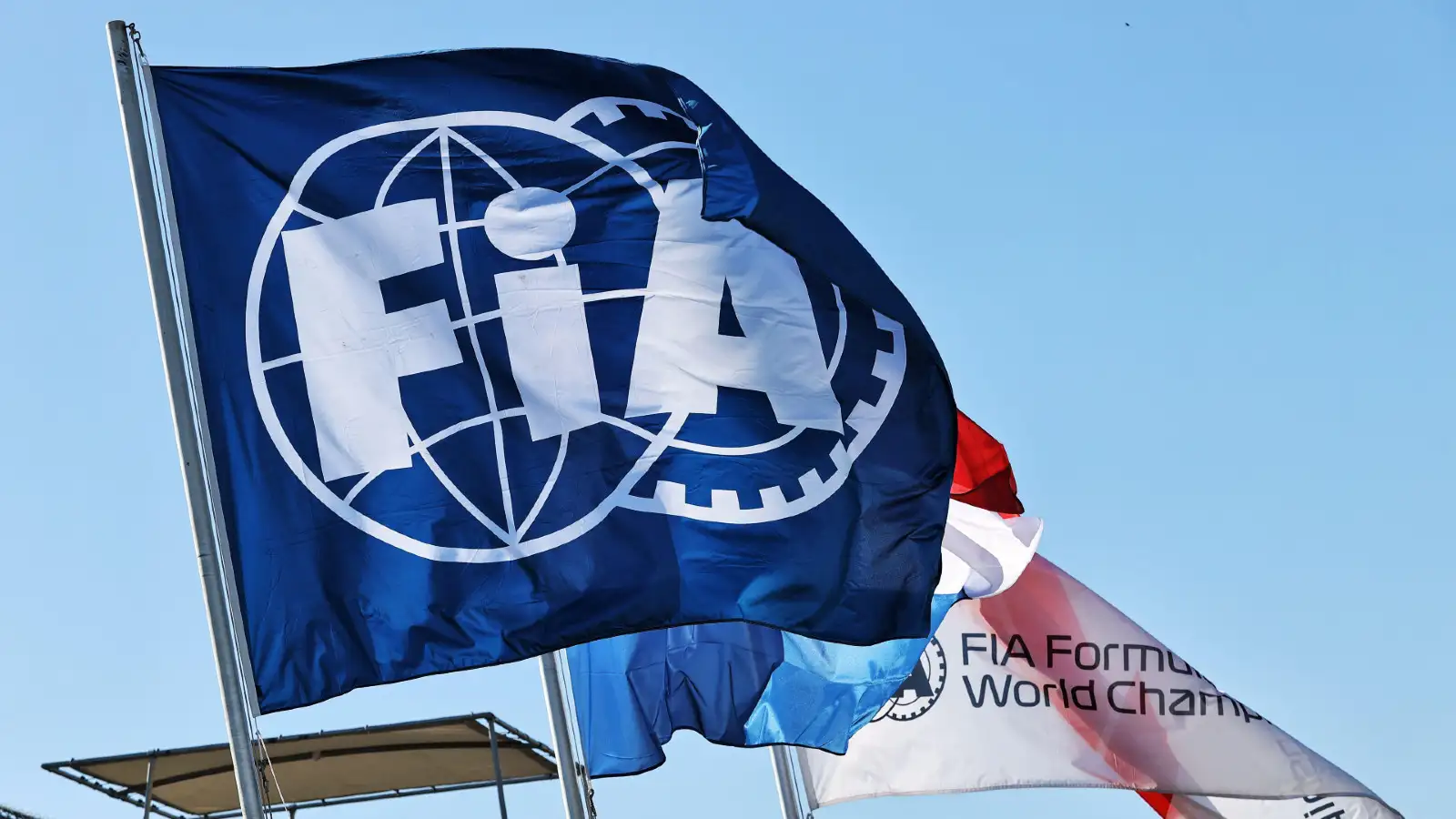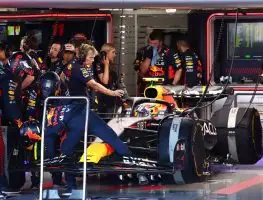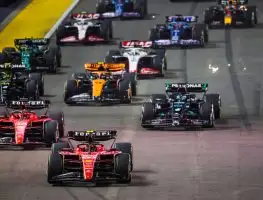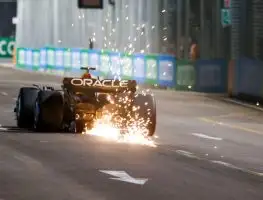Explained: How the FIA develops potential new F1 rules and regulations

FIA flag on display at the Dutch Grand Prix. Netherlands, September 2022.
Ever wondered how Formula 1 introduces new rules to the championship? The FIA have detailed how the process works from beginning to end.
In the F1 world, there is a constant flow of new rules and regulations introduced as the sport ever evolves – the majority of these new rules are introduced for the beginning of a new season, although the sport will occasionally make changes in the middle of a season.
While the likes of technical directives from the FIA, which aren’t specifically written into the technical regulations, can be used to address technical grey areas or loopholes, the vast majority of rule changes take place in a more democratic fashion.
考试ple of this could be seen at the recent Azerbaijan Grand Prix, when F1 introduced tweaks to the Sprint format to isolate the Saturday running from the rest of the Grand Prix weekend – a rule change that needed support right across the teams, the FIA, and FOM (Formula One Management).
But how does the process of a mooted rule change become reality, given the many moving parts that need to come together to make such changes happen?
The FIA have explained how a rule change comes about, from initial concept to being written into the regulations.
Step 1: The Formula 1 Commission
The vast majority of rule changes begin at meetings of the Formula 1 Commission.
F1 Commission meetings are held on at least three occasions throughout the F1 season and consist of a representative from each of the F1 teams, a representative from each of the four current power unit manufacturers, an FIA representative member, and one for the commercial rights holder (FOM/Liberty Media).
The attending personnel are given different voting weighting, depending on who they represent. Each team representative is given a weighting of a single vote, while the FIA and FOM representatives are given a weighting of 10 votes each (equal to the amount of teams participating in the championship).
The power unit manufacturers are not given a vote, unless the issue is related to an amendment of the power unit regulations.
Proposed ideas or suggestions on alterations to be made to the rules can be put forward to the Commission and, if there is a desire to put the matter to a vote, such as the Sprint weekend changes, a vote is conducted.
In order for the idea to pass the F1 Commission stage, a majority is required. For F1’s Sporting and Technical Regulations, the vote must be held before April 30th of the season prior to the one preceding the rule’s introduction. In this case, a majority of 25 of the 30 available votes if required. If a desired change is put to vote after this date with the intent of introduction the following season, a super majority of 28 votes is needed.
When it comes to power unit regulation changes, the same majorities are required, as well as at least two of the four power unit manufacturers voted in the affirmative.
For changes to the Financial Regulations, the same majorities apply, but the vote must be held prior to the 30th of September of the preceding year.
The FIA revealed that, in the case of the changes to the Sprint weekend format, the changes introduced for Azerbaijan were first presented at the F1 Commission meeting in London on the 21 January 2023. A super majority was thus required for an in-season change, with the vote ending up unanimous in approval.
PlanetF1.com recommends
F1’s penalty system explained: How does a driver pick up a penalty from the FIA?
FIA explained: What does it stand for and how does it govern F1?
Stage 2: The proposal passes the F1 Commission and is presented to the relevant Advisory Committee
If a proposed rule change is approved by the F1 Commission, the idea is forwarded to at least one relevant F1 Advisory Committee.
The four Advisory Committees are as follows:
- – F1 Sporting Advisory Committee (SAC) – applies to the F1 Sporting Regulations
- – F1 Technical Advisory Committee (TAC) – applies to the F1 Technical Regulations
- – F1 Financial Advisory Committee (FAC) – applies to the F1 Financial Regulations
- – F1 Power Unit Advisory Committee (PUAC) – applied to the F1 Power Unit Regulations
每个委员会由相关部门from the FIA, FOM, the F1 teams, and the power unit manufacturers, with directors in place for each committee.
The duty of the committee is to figure out how best to frame the wording of the intended rule change, taking into account any impact it may have on the current rulebooks. This is a particularly important step, as the wording can have direct knock-on effects on other areas of the rules.
一旦本条例被书面符号d off by the relevant Committee(s), it is referred back to the F1 Commission. It is put to another vote, either being passed or being referred back to the Committee(s) for further refinement, until both the Commission and the Committee(s) are happy to sign off. Once this happens, the proposed rule change is passed up the chain to the World Motor Sport Council.
In the case of the Sprint format changes, the F1 Commission forwarded the proposals to the Sporting Advisory Committee, who met on the 23 March. Opening a dialogue with the F1 Commission resulted in a further Commission meeting on 12 April, at the Australian Grand Prix, in order to confirm the SAC’s wording would achieve the goals of the Commission. The proposal passed the SAC on 13 April and the F1 Commission on 25 April.
Stage 3: Ratification by the World Motor Sport Council (WMSC)
The highest point of authority within the FIA, the World Motor Sport Council is made up of the FIA President (Mohammed Ben Sulayem), the FIA Deputy President for Sport (Robert Reid), the seven FIA Vice-Presidents, 14 titular members of the FIA, and five members by right (which includes FOM).
The F1 Commissions’ delegate, while not part of the WMSC, will be given a vote on the F1 matter at hand – this vote is granted as the President of the FIA Manufacturers’ Commission.
The WMSC meets at least three times a year, allowing for votes on rules and regulations, safety matters, and further development across the FIA’s motorsport remits.
In the case of the Azerbaijan Sprint changes, with no scheduled WMSC meeting to hold a vote, the changes were voted upon by e-vote. With the proposed rule changes being sent up the ladder from the F1 Commission’s final amendments, the e-vote amongst the WMSC resulted in ratification of the Sprint changes for the Azerbaijan Grand Prix.
WMSC can introduce changes without F1 Commission involvement
If the FIA sees the need for an immediate rule change on the grounds of safety, for either competitors, officials, or spectators, provisions are in place to allow for unilateral adjustments if needed.
Without any involvement of the F1 Commission, the FIA can make changes to the F1 Sporting and/or Technical Regulations and/or Financial Regulations – provided that the relevant F1 Advisory Committees are consulted and the amendments are put to vote at the WMSC level.






